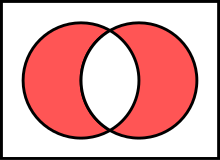Wikipedia:Reference desk/Archives/Language/2020 December 22
| Language desk | ||
|---|---|---|
| < December 21 | << Nov | December | Jan >> | December 23 > |
| Welcome to the Wikipedia Language Reference Desk Archives |
|---|
| The page you are currently viewing is a transcluded archive page. While you can leave answers for any questions shown below, please ask new questions on one of the current reference desk pages. |
December 22[edit]
Is there a tool that shows these IPA chart spots and phonemes and nothing else?[edit]

Pick two languages, a list or visual diagram of what's in the red zone then appears. Or one list or visual for vowels and one for consonants, doesn't have to be both in the same list or visual. Sagittarian Milky Way (talk) 03:30, 22 December 2020 (UTC)
So Spanish-English would show their halfway between v and b sound, ñ, their halfway between w and g sound and second flavor of r and like 7 vowels (more in some Englishes) on the English side and maybe a few more differences. Japanese-English would have that u-like sound, that halfway between p and f sound etc and a lot of vowels. German-English might have one or 2 vowels left over but on the non-English side this time. As they are phonemes in German but not English. Sagittarian Milky Way (talk) 03:42, 22 December 2020 (UTC)
- The space of speech sounds is multi-dimensional; in assigning the speech sounds of a language to phonemes this space is partitioned. These partitions are in general not the same for different languages, so it is possible that given three speech sound s1, s2 and s3, language X groups s1 and s2 together, while language Y groups s2 and s3 together. The fact that a phoneme of language X has the same IPA phonetic symbol as some phoneme of language Y is no guarantee that the realizations of that phoneme by native speakers of language X will be perceived as the same phoneme by native speakers of language Y. Thus, any such tool will have a limited usefulness. Additionally, a dialect of a given language may employ a different set of phonemes, and phonologists may have different opinions on whether a given phoneme occurs at all in some language, and also whether two sounds are allophones or not. In a way it is a bit like asking: Which colours were used by Kandinsky that were not used by Picasso? --Lambiam 10:45, 22 December 2020 (UTC)
- Some of that complexity could be notated i.e. a Japanese-Spanish list for English-speakers could have (l↔ɹ) for Japanese and l (ɹ) r for Spanish informing that there's partial but not simple overlap and switching an l with an upside-down r can't change the meaning in Japanese but can in Spanish. Dialectal phonemes and IPA letters or boxes/half-boxes/vowel spots on the chart could be put last and asterisked with a note below saying these dialects only or free variation with x in dialects x,y and z or whatever. Sagittarian Milky Way (talk) 14:56, 22 December 2020 (UTC)
What3Words[edit]
I am seeking a list of all 40,000 English words used in What3Words coordinates. Anyone know of such a list? -- SGBailey (talk) 14:34, 22 December 2020 (UTC)
- They have a contact us page here. That may be your best option to get an answer for your question. --Jayron32 15:17, 22 December 2020 (UTC)
- @SGBailey: According to [1], they do not make their word list publicly available. RudolfRed (talk) 21:31, 22 December 2020 (UTC)
Predominant script of 19th century America[edit]
I'm doing some research on 19th century America, specifically from 1776 up to the Civil War in 1861, and I was wondering if anyone knew the predominant cursive style in the period that American documents would be written in (which I will then try to gain familiarity in). Doing some research, I saw the Spencerian script was common during the 19th century, but according to the Wikipedia article it was only developed in the 1840s. Zoozaz1 talk 21:13, 22 December 2020 (UTC)
- 19th-20th Century Penmanship In The USA says John Jenkins and Benjamin Foster (both apparently lacking an article) preceded Spencer. Clarityfiend (talk) 21:26, 22 December 2020 (UTC)
- Some more wikilinks for the earlier part of your period:
- Round hand says “by the mid-18th century the Round Hand style had spread across Europe and crossed the Atlantic to North America”.
- Copperplate script says: “Copperplate was undoubtedly the most widespread script in the period between the 17th and 18th centuries, and its influence spread not only throughout Europe but also in North America.”
- Dip pen contains some brief but interesting discussion about how its invention in the early 19th century changed handwriting styles. 70.67.193.176 (talk) 00:21, 23 December 2020 (UTC)
- Those links seem helpful, especially the 19th-20th century penmanship in the USA. Thanks! Zoozaz1 talk 03:14, 23 December 2020 (UTC)
- I've created a stub for John Jenkins (penmanship). Clarityfiend (talk) 10:23, 24 December 2020 (UTC)
- Those links seem helpful, especially the 19th-20th century penmanship in the USA. Thanks! Zoozaz1 talk 03:14, 23 December 2020 (UTC)
